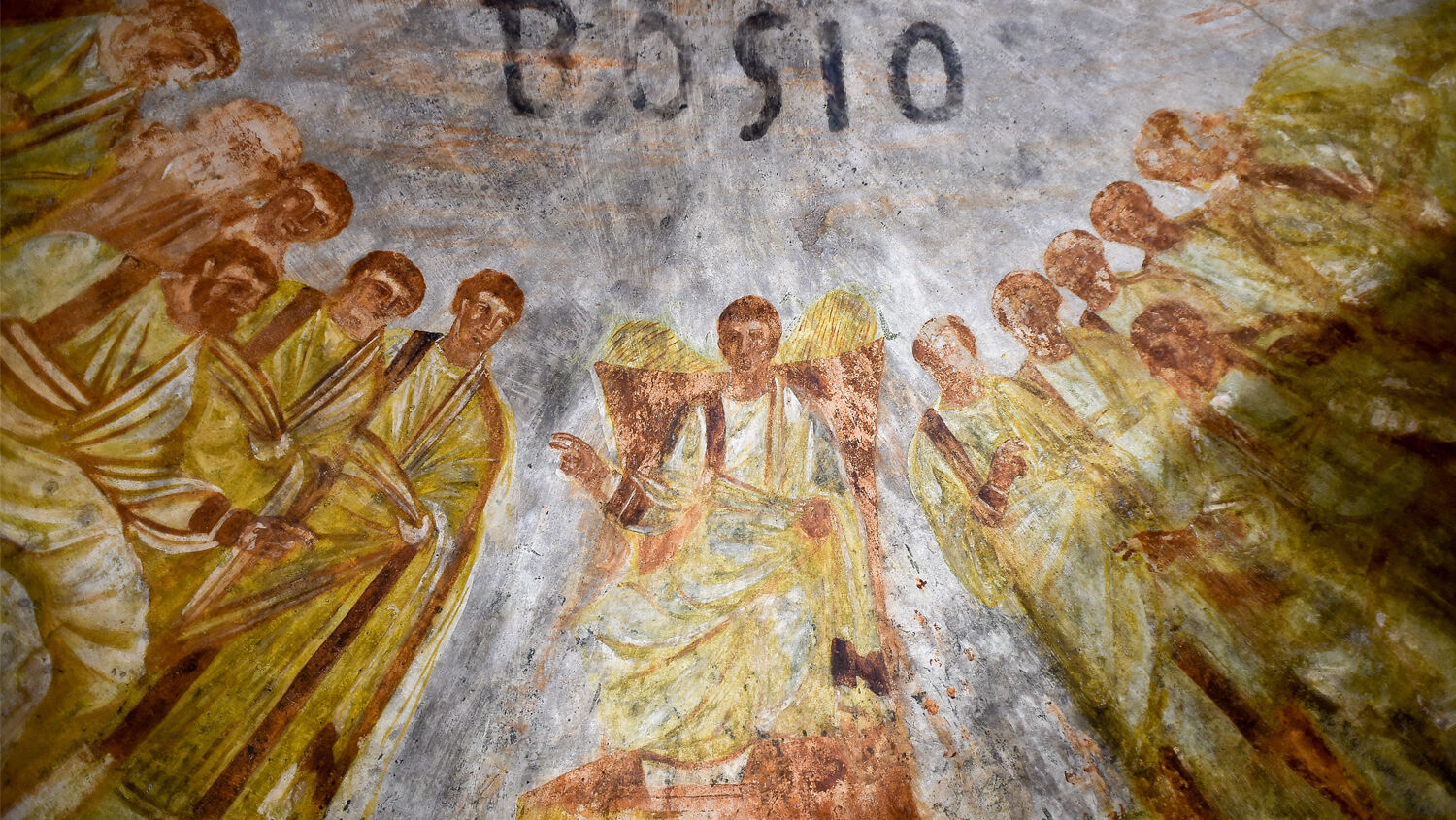
Was an Image of Jesus Discovered in Rome’s Catacombs?
Deep in the heart of Rome’s oldest catacombs, archaeologists unveiled a set of 1,600-year-old frescoes depicting scenes from pagan mythology and Christian history. A thick layer of algae, calcium deposits and smoke had masked these ceiling paintings for centuries. But using a technique called laser cleaning, archaeologists working in the Catacombs of San Domitilla were able to strip away the grime and unveil these images to the world this past May.
“Until recently, we weren’t able to carry out this sort of restoration—if we had done it manually we would have risked destroying the frescoes,” the head of the restoration project, Barbara Mazzei, told the Telegraph. “When we started work, you couldn’t see anything—it was totally black. Different wavelengths and chromatic selection enabled us to burn away the black disfiguration without touching the colors beneath.”
This discovery sheds new details on the process by which wealthy Romans fused their old pagan beliefs with new Christian beliefs to form the new religion of Catholicism. The dozen or so frescoes unveiled so far depict scenes from the Old and New Testaments, as well as pagan symbols of the afterlife. The most notable fresco depicts Jesus Christ on a throne between two groups of apostles. Experts believe the crypts were painted around a.d. 360—about 40 years after Emperor Constantine issued an edict forbidding worship on any day except Sunday.
The fresco of Jesus Christ depicts Him as looking more like a Roman emperor than a Jewish carpenter. Yet it does not portray him with long hair. Artwork showing Jesus as a frail, pale, sad, effeminate man with long hair first emerged around 300 years after Christ’s crucifixion but did not become established until the sixth century. After Catholicism became the official religion of the Roman Empire, many people who had previously worshiped multiple deities, the universe, animals or objects became “Christian.” But they did not give up all of their old beliefs; they simply fused them with Catholicism. During this time, half-pagan artists across the empire began to draw Christ to look like the gods they had worshiped previously, such as Zeus and Serapis.
The Bible describes Jesus Christ very differently from how He is depicted in modern art and ancient frescoes. As a human being, Jesus was a Jew (Hebrews 7:14). He looked like a normal Jewish man of His time (Isaiah 53:2; Matthew 26:48-50). He was also a carpenter (Mark 6:3). This means He would have worked outdoors in all kinds of weather. He would have been tanned in the summer and wind-burned in the winter. He would have had a healthy, weathered look about Him. Since carpenters at the time of Christ were also familiar with stone masonry, Christ would have been muscular enough to carry and place large stones in homes and buildings. He was not weak or sickly looking.
God the Father has not inspired any pictures, paintings or films visually portraying Himself or Jesus Christ. This is because He wants us to worship Him in spirit and in truth (John 4:24). Yet God inspired a written description of what Christ looked like as a human, so we would have a perfect example of a masculine leader. Together with steel-like traits of vibrant health, intelligence, decisive leadership, righteous indignation and powerful persuasiveness, Jesus also exhibited many velvet qualities. Above all, He was humble. Pharisees criticized Him for spending time with sinners, but He knew that the sick are the ones who need a physician (Luke 5:31-32). The Lord and Master of the disciples instituted an ordinance of humility at His final Passover, and He washed their feet (John 13:13-14).
All the paintings, statues and movies utterly fail to depict the appearance and character of Jesus Christ. For a more complete description of how Christ exemplified true masculinity, download our free e-book Biblical Manhood.
